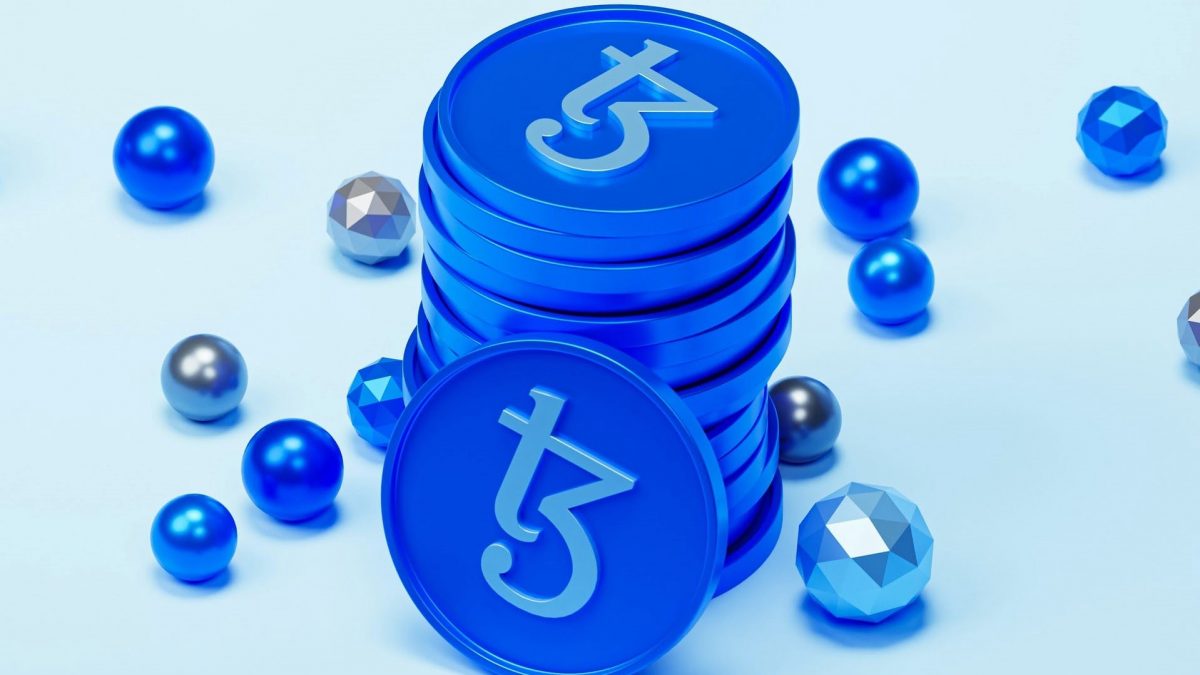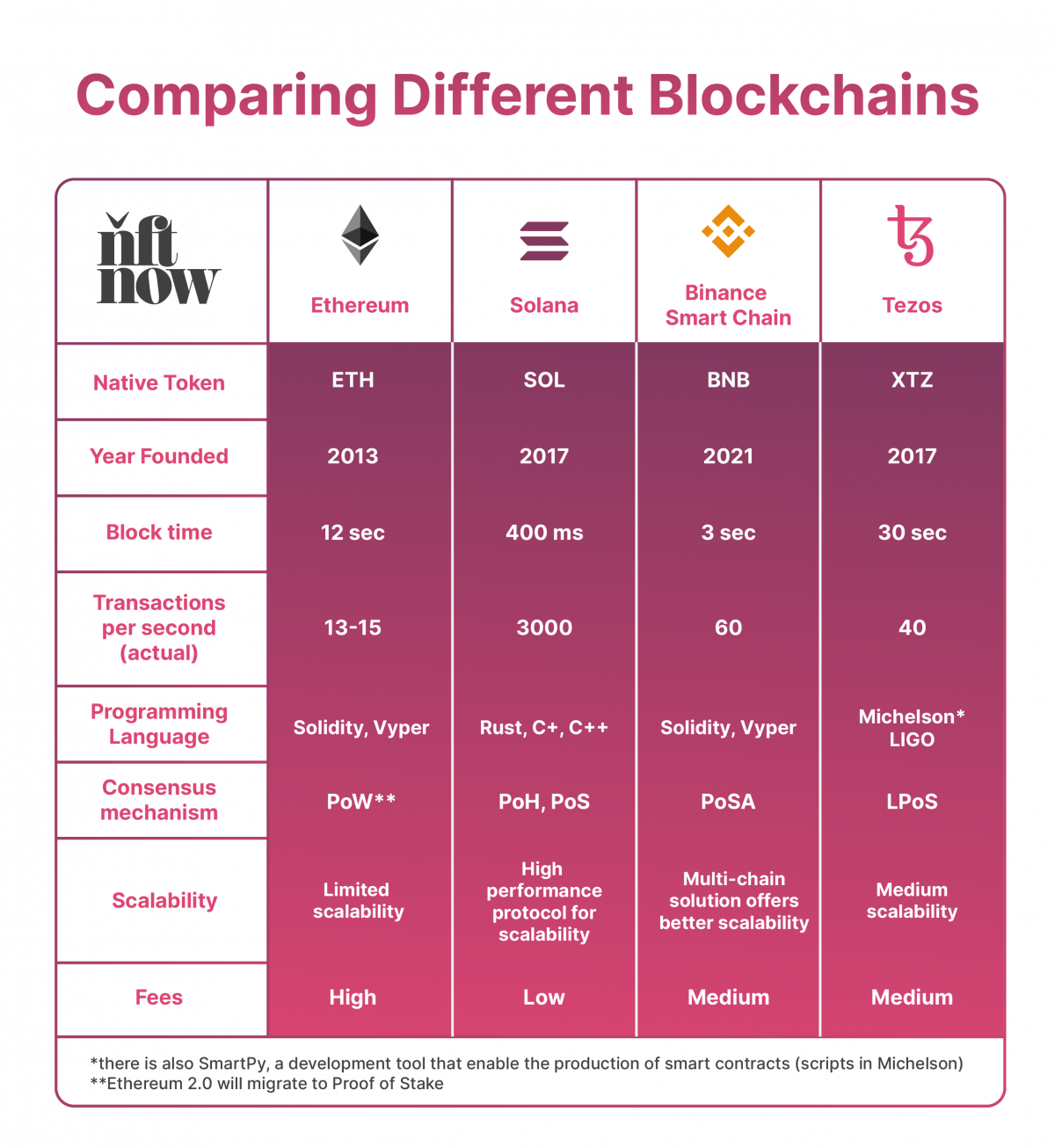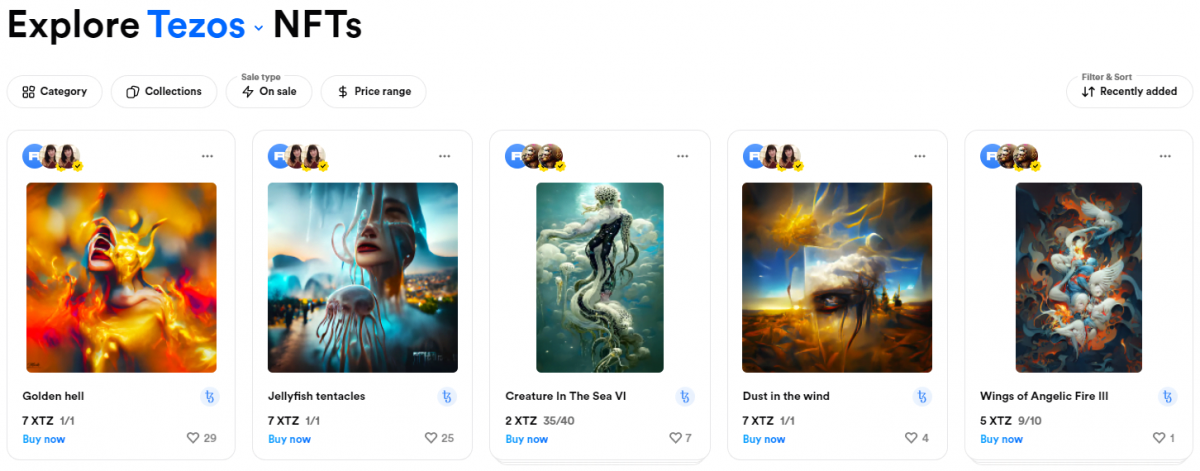Everything to Know About the Tezos Blockchain and NFTs
Tezos has become one of the world’s most popular blockchains for non-fungible tokens (NFTs). Wondering why? Just look to the climate for the answers you need. Over the course of 2021, there was a significant increase in concern regarding the environmental impact of NFTs and blockchain technologies. Tezos stands as a far greener alternative. As a result, as the nonfungible ecosystem expanded, the Tezos NFT market substantially increased in popularity.
Of course, there are also scaling factors to take into account.
Thanks to its fast and cheap transactions, where many other blockchains struggle, Tezos seems to excel. Additionally, Tezos is billed as a blockchain that is “designed to evolve.” Its focus on security and array of upgradeable features have garnered it a lot of interest throughout the years.
But onboarding to new blockchains and NFT ecosystems is never easy. Which is why we’re here to help. This guide is intended to walk you through everything you need to know to seamlessly participate in the Tezos ecosystem. Here, we take a deep dive into what Tezos is, how it works, why there’s so much interest in Tezos crypto and NFTs, and how you can make the most out of this fresh, new world. Let’s take a deep dive into all things Tezos.
What is the Tezos blockchain?
Tezos was founded in 2017 by Kathleen Breitman and Arthur Britman. At its core, Tezos is an open-source platform for assets and applications. It’s similar to other blockchains in that it’s a platform to create smart contracts and build decentralized applications (dApps).
Tezos’ native cryptocurrency is XTZ. Despite the blockchain’s popularity for NFTs, its crypto ranks around 50th in terms of market cap. Yet, what Tezos may lack in market prominence, it makes up for with innovation.

One of the most unique and interesting aspects of the Tezos blockchain is its ability to self-amend. In short, it can improve itself over time by using a formalized process to upgrade its protocol. Many blockchains lack formal governance structures. As a result, decisions are often made by a small group and imposed on the whole ecosystem. Tezos has on-chain mechanisms for proposing, selecting, testing, and activating protocol. These features, paired with the fact that Tezos has been incentivizing developers to build dApps on the platform since its first days in operation, has positioned the blockchain as a leader in operability — it’s able to reach consensus and scale quickly while remaining safe and reliable.
And just as NFTs first began booming in early 2021, so too did the NFT use case for Tezos. However, there were a few jumps and starts.
One of the first marketplaces on the blockchain was Hic et Nunc. At the time, it was heralded as an economic alternative to Ethereum-centric marketplaces. But the platform shut down suddenly on Nov. 14, 2021. No explanation was given on the marketplace’s official accounts. Fortunately, the NFTs that were listed there are immutable, as they are recorded on the blockchain itself. Others picked up the cause and created new ways to mint and trade on Tezos. Many of the NFTs that originally went to market on Hic et Nunc are now listed on these other marketplaces — and Tezos is still considered one of the best and most sound chains for trading NFTs.
How does Tezos work?
Tezos runs on a Proof-of-Stake (PoS) consensus mechanism, as opposed to the Proof-of-Work (PoW) mechanisms that are used by Ethereum and other blockchains. Herein lies the origin of both Tezos’ ecological and economic selling points.
PoW requires computers to compete with one another to solve complex puzzles to add blocks and transactions to the blockchain. As such, blockchains that use PoW (like Ethereum) require a lot of computer power — meaning a lot of energy — to work.
PoS, on the other hand, allows users to stake an amount of their cryptocurrency for the chance to be randomly chosen as a block validator. This type of mechanism rewards loyalty while reducing the computational work needed to verify blocks and transactions on the blockchain. Because of this, Tezos runs efficiently and also charges much lower fees than other blockchains. In fact, it uses about two million times less energy than Ethereum.

How to buy and sell crypto on Tezos
Of course, if you’re hoping to trade XTZ, you’ll need a Tezos wallet. While hardware wallets like Ledger and Trezor remain solid and secure solutions for storing any sort of crypto, Temple Wallet and Kukai Wallet are the most popular wallets for trading crypto and NFTs on Tezos. And they’re just as easy (if not easier) to install than any of the other popular NFT wallets.
Now that you have your wallet, where should you buy your Tezos crypto? Fortunately, you have many options.
Although XTZ, Tezos’ native cryptocurrency, isn’t the most popular crypto to trade, it is still available to buy and sell on nearly every major centralized and decentralized exchange. You can buy Tezos with Coinbase, Binance, and a host of other platforms. Centralized exchanges are generally the easiest to navigate and use, and so they are better for beginners. Of course, you can also use a decentralized exchange (DEX). These are generally just like centralized exchanges, except that they are distributed across a network of computers and don’t run on a centralized server. As a result, they aren’t subject to regulation. Then there are crypto brokers. These are centralized providers that act as an intermediary between a user and the cryptocurrency markets to facilitate cryptocurrency trades. As a result, users aren’t trading with each other based on current market prices. Instead, the price is set by the broker.
It’s better to investigate decentralized exchanges and brokers once you are more familiar with blockchain and know how to protect yourself when using it. But either way, before you run off to make a purchase, make sure you read our full guide to crypto exchanges here.
How to make and mint a Tezos NFT
Minting NFTs on the Tezos blockchain is just about the same as minting on, say, Ethereum or Solana. As is the case with other blockchains, you’ll need to have a wallet set up before you begin. You’ll also need to deposit at least a few dollars worth of the blockchain’s native crypto (in this case, XTZ) into your wallet to cover minting and other transaction fees.
Don’t fret about the price though, as previously stated, Tezos fees are far less expensive than that of the Ethereum blockchain. The cost obviously fluctuates a bit. But at current prices, minting an NFT on Tezos costs around $0.20. In the case of minting on Objkt, Tezos’ most popular NFT marketplace, creating an entire NFT collection and smart contract will only cost you around 1 XTZ (around $2-3). This has helped lower the barrier to entry for artists around the world who seek to mint NFTs.
The type of NFT you wish to mint will ultimately determine where you will be most successful minting it. So, your next steps will then be to determine what kind of NFT you want to mint (a song? a photograph? a book?). That part is pretty easy (and mostly intuitive). You’ll also need to consider if you want to create a 1/1 (one-of-one) or an edition (multiple copies of the same NFT). If what you’re after is to mint a large-supply NFT collection, similar to CryptoPunks or Bored Apes, you might want to consider teaming up with an artist and developer before diving into an undertaking of that magnitude.
Once all is said and done and you have your JPEG or another asset ready to turn into an NFT, you’ll need to find the right platform to mint on.
Tezos NFT marketplaces
As is the case with other blockchains, there is a diverse range of places for enthusiasts to trade NFTs on Tezos. Although there aren’t as many medium-specific marketplaces (akin to the music and photo NFT platforms of Ethereum), Tezos marketplaces play host to a wide variety of small-batch to large-scale collections.
Currently, Objkt is the largest and most popular marketplace on the Tezos chain. We can think of this marketplace sort of like the OpenSea for Tezos NFTs, hosting everything from JPEGs to videos and songs. Originally, the aforementioned Hic et Nunc held the title of most popular, but when the platform was discontinued in Nov. 2021, Objkt quickly took over.

A close second to Objkt would undoubtedly be Teia. This new(ish) marketplace was created in the image of Hic et Nunc very shortly after it was shut down. It is a community-owned platform that looks and operates very similar to that of the late Hic et Nunc, and it has been quickly gaining popularity since launching in Now. 2021.
Kalamint — one of the first Tezos NFT marketplaces to ever exist — is another notable minting and trading platform. Founded in 2020, Kalamint has remained a popular choice among the collectibles crowd. Although in 2022 it isn’t as booming as it once was, art, collectibles, and photography are still traded regularly on the platform.
Each of these platforms offers a straightforward, beginner-friendly minting process that includes comprehensive step-by-step instructions. This means you won’t have to worry about writing your own smart contract or interacting directly with the network. Minting on most Tezos marketplaces is about as easy as signing up for a social media account and/or shopping online.
For a more comprehensive list of all places to trade NFTs on Tezos, visit DappRadar’s live chart of the Top Tezos Marketplaces.
NFT Projects on Tezos
Better known for its homegrown artist community than its individual projects, Tezos is a treasure trove for 1/1 and limited-edition artworks, and it has even attracted surprise drops from Ethereum heavyweights like XCOPY and Blake Kathryn. Now, Tezos PFPs haven’t achieved market dominance quite at the same level as Ethereum avatar projects, but there are still quite a few great large-scale Tezos projects to look out for. Here are a few:
Tezzards is a collection of 4,200 “snazzy” lizard-inspired PFP NFTs. Although numerous avatar collectibles have been minted on Tezos over the years, Tezzards is possibly the first PFP project truly take off on the blockchain — receiving widespread support and garnering regular trading throughout the NFT space.
FxHash is both a generative art platform and marketplace. It lives as an open platform where artists can mint generative NFTs without having to jump through the hoops of traditional generative platforms. The philosophy of fxhash has been described by its creators as “to provide a framework so that generative artists can have a space in which they can mint their pieces meant to be generative. No curation, open to everyone.”
Dogami is both an NFT collection and a metaverse game. With Dogami, users can collect a 3D dog-themed NFT that they can raise, interact in AR, and even earn crypto rewards from taking care of their pet. Think Tamagotchi but for the blockchain!
And the list goes on and on. As more creators make the switch over to Tezos, the possibilities of what can be built on this green NFT blockchain alternative continue to grow exponentially.
The post Everything to Know About the Tezos Blockchain and NFTs appeared first on nft now.

